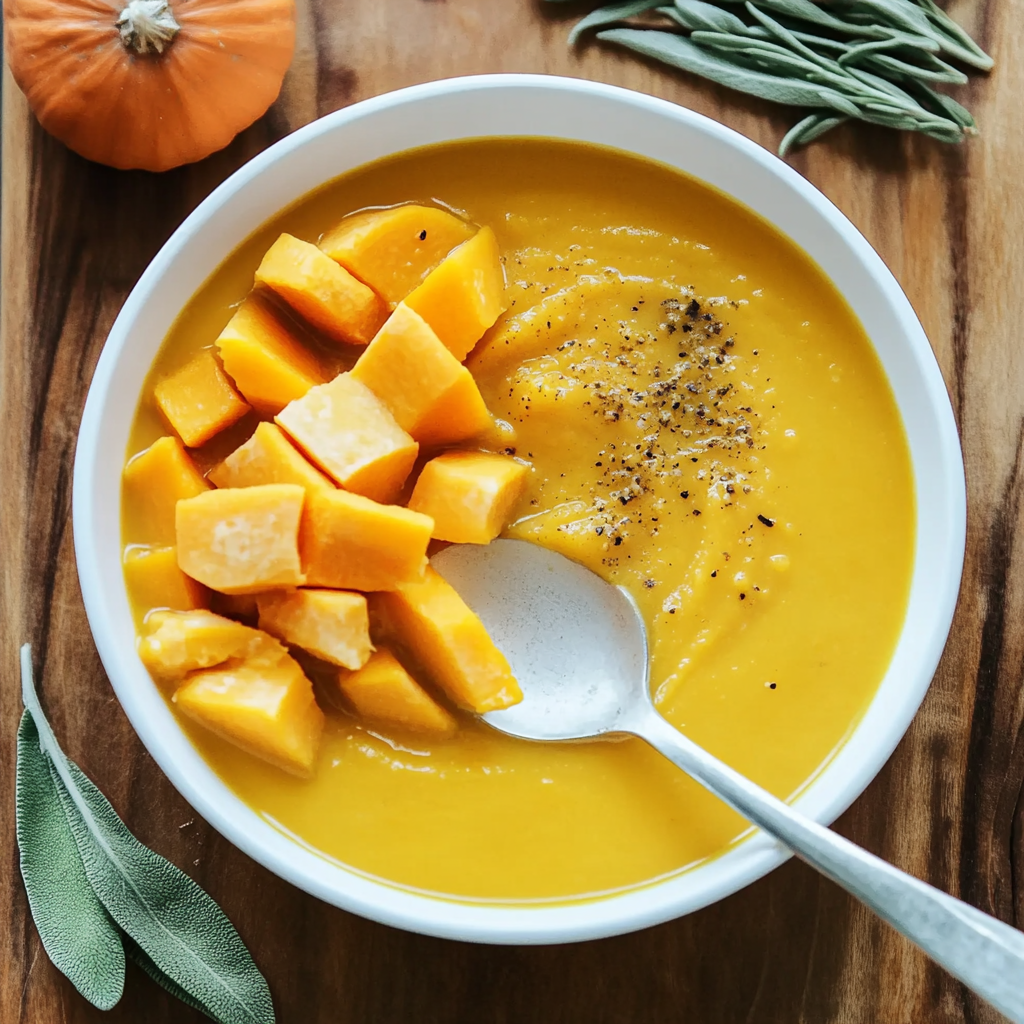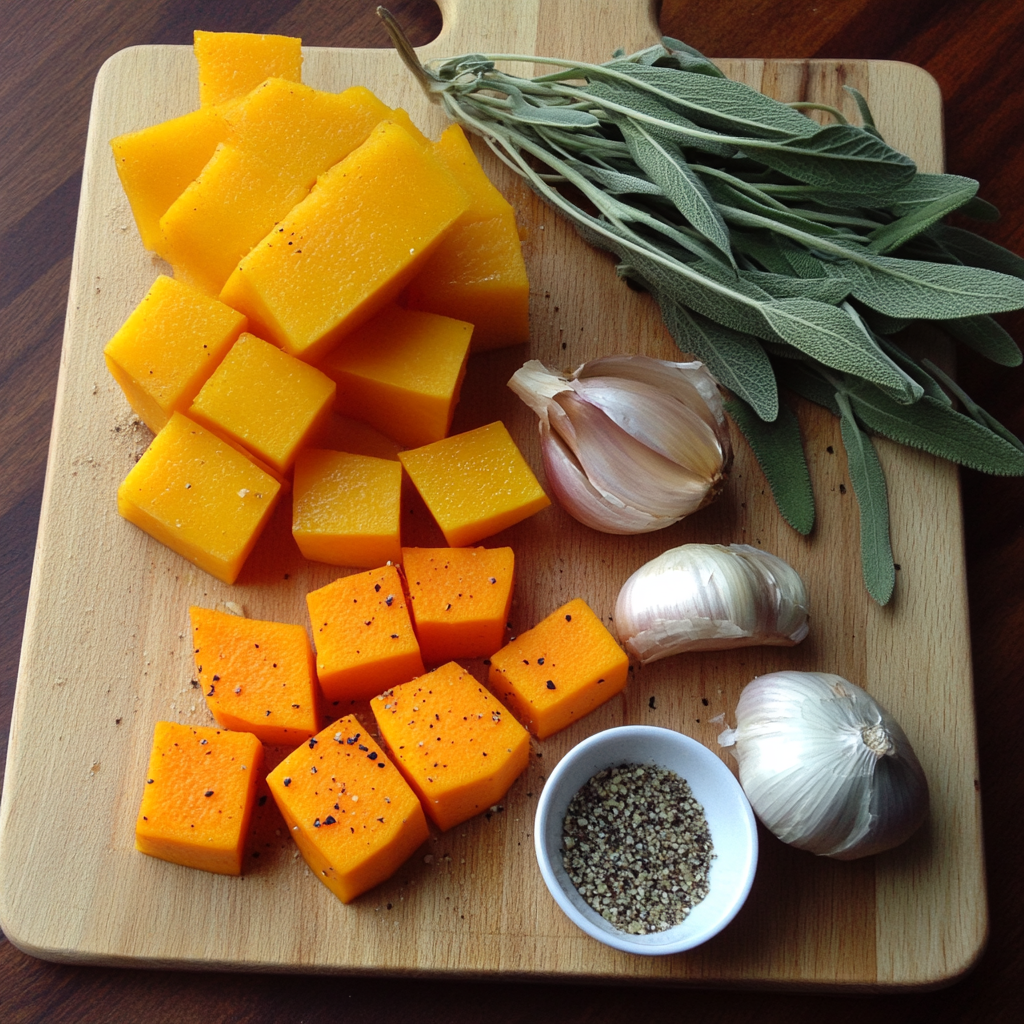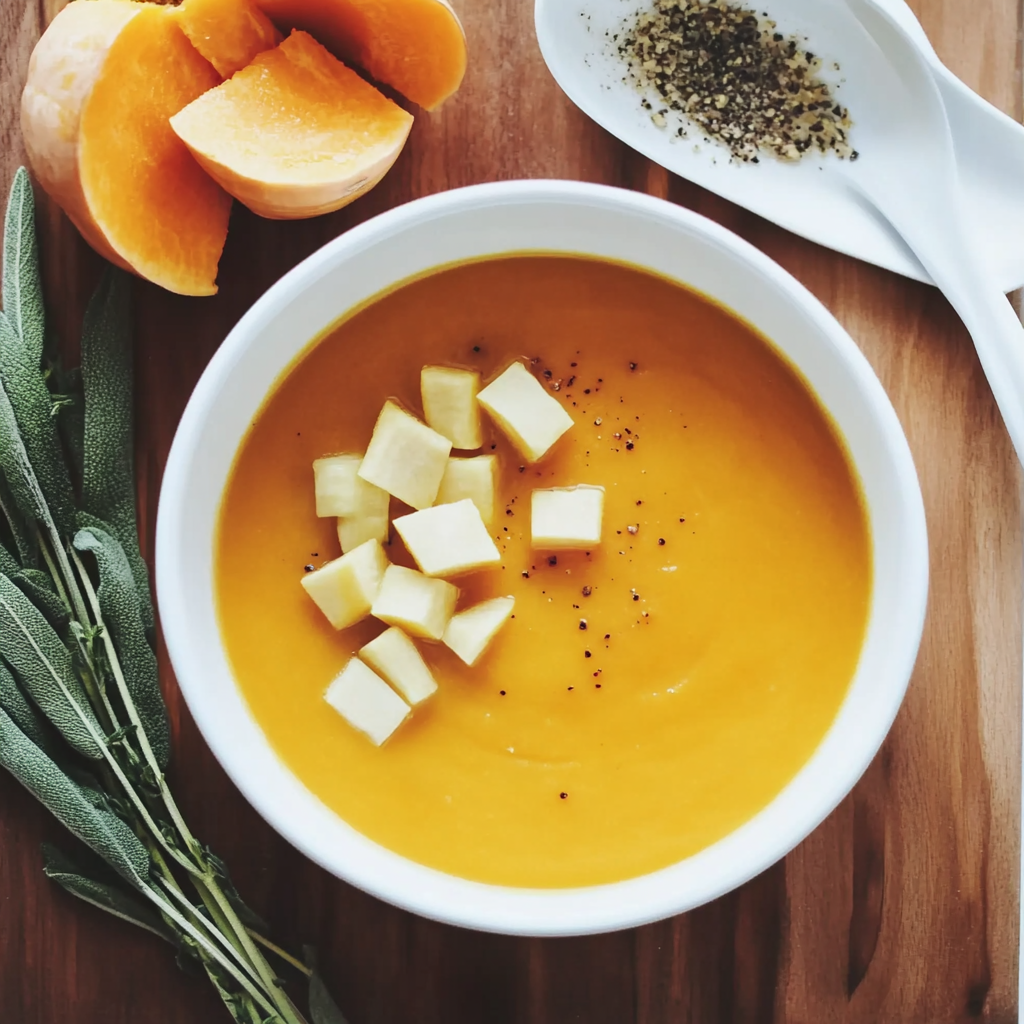 Pin it
Pin it
Transform simple ingredients into a luxuriously creamy butternut squash soup that captures the essence of fall comfort. This velvety soup combines perfectly roasted squash with aromatic shallots and a touch of maple sweetness, creating a bowl of pure comfort that warms both body and soul. The roasting process brings out the squash's natural sweetness, while a hint of nutmeg adds that perfect touch of warmth.
I discovered this combination of maple syrup and nutmeg one chilly afternoon while experimenting with my grandmother's basic squash soup recipe. The subtle sweetness of maple transformed the soup into something extraordinary, and it's been my go-to version ever since.
Essential Ingredients
- Butternut Squash: Choose one with a solid beige color and no green streaks for optimal ripeness
- Shallots: Their delicate flavor adds depth without overpowering the squash. Look for firm bulbs with tight skin
- Pure Maple Syrup: Use the real thing, not pancake syrup - it makes a noticeable difference
- Fresh Nutmeg: Buy whole nutmegs and grate as needed for the brightest flavor
- Vegetable Broth: Homemade provides the best flavor, but a good quality store-bought works well
- Butter or Olive Oil: Either adds richness - choose based on your dietary preferences
 Pin it
Pin it
Detailed Instructions
- Roast the Squash
- Preheat oven to 400°F. Cut squash lengthwise, using a sturdy, sharp knife. Remove seeds with a spoon, saving them for roasting if desired. Score flesh in a crosshatch pattern for better oil absorption. Brush generously with olive oil. Season well with salt and pepper. Place cut-side down on lined baking sheet. Roast 45-50 minutes until fork-tender.
- Prepare the Aromatics
- Mince shallots and garlic while squash roasts. Heat butter or oil in large pot over medium heat. Add shallots and cook until softened, about 4 minutes. Add garlic and cook until fragrant, about 1 minute. Season with salt and pepper. Add freshly grated nutmeg.
- Blend the Soup
- Scoop warm squash flesh from skin. Place in blender with sautéed aromatics. Add half the warm vegetable broth. Blend until completely smooth. Add remaining broth and maple syrup. Blend again until silky. Taste and adjust seasonings.
- Final Touches
- Return soup to pot. Heat gently, stirring occasionally. Add more broth if needed for desired consistency. Adjust seasonings to taste. Garnish with pepitas and fresh herbs.
My favorite memory of this soup comes from a particularly cold November evening when my whole family gathered for dinner. The aroma of roasting squash filled our home, and everyone kept wandering into the kitchen to ask when it would be ready.
 Pin it
Pin it
The Perfect Temperature
Finding the right balance in roasting temperature ensures caramelization without burning. A 400°F oven is ideal for developing those deep, sweet flavors.
Making It Ahead
This soup actually improves overnight as the flavors meld together, making it perfect for entertaining or meal prep.
Garnishing Options
A sprinkle of pepitas adds wonderful crunch, while a swirl of coconut cream creates an elegant presentation.
Serving Suggestions
Pair with a grilled cheese sandwich made with sharp cheddar and grainy mustard for the ultimate comfort meal.
After years of making this soup, I've learned that patience is key - from roasting the squash to letting the flavors develop. The result is a perfectly balanced bowl of comfort that never fails to bring warmth to even the coldest days. Whether served as a starter or main course, this soup has become a cherished part of our fall and winter menu.
Frequently Asked Questions
- → Can I make this soup vegan?
- Yes, substitute butter with olive oil for a vegan-friendly option.
- → How should I store leftovers?
- Cool the soup to room temperature, then refrigerate for up to 4 days or freeze for 3 months.
- → Can I use an immersion blender?
- Yes, an immersion blender works well. Blend the soup directly in the pot.
- → What pairs well with this soup?
- Serve with crusty bread or a side salad for a complete meal.
- → How do I safely cut the squash?
- Use a sharp knife and steady cutting board. Slice off ends, stand upright, and halve carefully.
